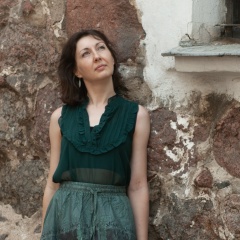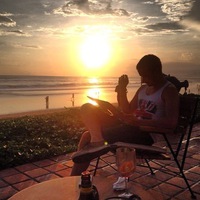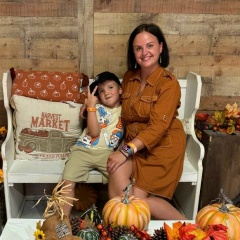Земля является для детей грандиозной поверхностью, на которой расставлено, разложено, явлено все, что существует на белом свете. Причем большая часть строений, растений, всевозможных предметов на земле прочно утверждена — они велики, тяжелы, занимают свои законные места в организованном пространстве окружающего мира. Но среди множества предметов на поверхности земли есть категория мелких «беззаконных комет», волею судеб оказавшихся на дороге жизни нежданно-негаданно. Это потерянные кем-то вещицы, монеты, пуговицы, значки, брошки, серьги, осколки цветных стёклышек, вдавленные в землю разноцветные крышки от бутылок, странные железки, обломки и прочая дребедень. Для взрослых все это жизненный сор, не стоящий внимания или даже вызывающий раздражение.
Дети относятся к этому сору иначе.
Ранняя стадия детского собирательства поражает тем, что поднятые ребенком «штучки» обычно не имеют никакой потребительской ценности даже для него самого. Они привлекают внимание ребенка индивидуальными особенностями своей формы, цвета, вещества или же смутным сходством с чем-то неясным. Центральным пунктом этой ситуации является сам акт обнаружения: ребенок увидел «штучку» в одиночестве ее самости, среди всеобщего существования выделил как нечто замечательное, отличное от остального и решил включить её в сферу своего собственного бытия. Поднятая с земли «штучка» становится одним из строительных элементов символической системы «Я» самого ребенка. Он утверждает себя для себя же через принадлежащие ему странные предметы, главная ценность которых состоит в том, что они индивидуальны и самостоятельно добыты в свободном поиске среди другой материи окружающего мира.
Подобное познается подобным. Между двумя и пятью годами ребенок проживает стадию формирования личностной автономии, постепенно открывая свою отдельность от матери и способность к самостоятельным действиям.
Он начал ощущать себя субъектом — активным лицом, имеющим отдельность личного бытия. В силу этого он противопоставлен множественной цельности всего остального мира, но одновременно и причастен к нему, находясь внутри него.
Если его развитие вдет без помех, то к концу этого периода у ребенка должно сформироваться внутреннее убеждение, что «Я есть» и «Я могу». Теневой стороной этого положительного приобретения оказывается глубинное переживание одиночества индивидуального существования, которое ребенок периодически начинает чувствовать в самом себе и интуитивно распознавать в окружающей жизни на доступных ему моделях. Одной из таких моделей оказываются «штучки», выпавшие из привычного круга, в котором у них было свое место, и теперь валяющиеся на дороге неприкаянными.
Осорина, Секретный мир детей
Дети относятся к этому сору иначе.
Ранняя стадия детского собирательства поражает тем, что поднятые ребенком «штучки» обычно не имеют никакой потребительской ценности даже для него самого. Они привлекают внимание ребенка индивидуальными особенностями своей формы, цвета, вещества или же смутным сходством с чем-то неясным. Центральным пунктом этой ситуации является сам акт обнаружения: ребенок увидел «штучку» в одиночестве ее самости, среди всеобщего существования выделил как нечто замечательное, отличное от остального и решил включить её в сферу своего собственного бытия. Поднятая с земли «штучка» становится одним из строительных элементов символической системы «Я» самого ребенка. Он утверждает себя для себя же через принадлежащие ему странные предметы, главная ценность которых состоит в том, что они индивидуальны и самостоятельно добыты в свободном поиске среди другой материи окружающего мира.
Подобное познается подобным. Между двумя и пятью годами ребенок проживает стадию формирования личностной автономии, постепенно открывая свою отдельность от матери и способность к самостоятельным действиям.
Он начал ощущать себя субъектом — активным лицом, имеющим отдельность личного бытия. В силу этого он противопоставлен множественной цельности всего остального мира, но одновременно и причастен к нему, находясь внутри него.
Если его развитие вдет без помех, то к концу этого периода у ребенка должно сформироваться внутреннее убеждение, что «Я есть» и «Я могу». Теневой стороной этого положительного приобретения оказывается глубинное переживание одиночества индивидуального существования, которое ребенок периодически начинает чувствовать в самом себе и интуитивно распознавать в окружающей жизни на доступных ему моделях. Одной из таких моделей оказываются «штучки», выпавшие из привычного круга, в котором у них было свое место, и теперь валяющиеся на дороге неприкаянными.
Осорина, Секретный мир детей
For children, the Earth is a grandiose surface, on which everything that exists in the world is placed, laid out, revealed. Moreover, most of the buildings, plants, all kinds of objects on earth are firmly established - they are large, heavy, take their rightful places in the organized space of the surrounding world. But among the many objects on the surface of the earth there is a category of small "lawless comets", by the will of fate found themselves on the road of life unexpectedly and unexpectedly. This is something lost by someone, coins, buttons, badges, brooches, earrings, shards of colored glass, multi-colored bottle caps pressed into the ground, strange pieces of iron, fragments and other rubbish. For adults, all this is life rubbish, not worth attention or even irritating.
Children relate to this litter differently.
The early stage of children's collecting is striking in that the "things" raised by the child usually have no consumer value, even for himself. They attract the child's attention by the individual characteristics of their shape, color, substance, or by a vague resemblance to something unclear. The central point of this situation is the very act of discovery: the child saw the "little thing" in the loneliness of her self, singled it out among universal existence as something remarkable, different from the rest, and decided to include it in the sphere of his own being. The "little thing" raised from the ground becomes one of the building elements of the child's own symbolic system "I". He asserts himself for himself through the strange objects belonging to him, the main value of which is that they are individual and independently obtained in a free search among other matter of the surrounding world.
Like is known by like. Between two and five years of age, the child goes through the stage of the formation of personal autonomy, gradually discovering his separation from the mother and the ability to act independently.
He began to feel himself as a subject - an active person with a separateness of personal being. By virtue of this, he is opposed to the multiple wholeness of the rest of the world, but at the same time he is involved in it, being inside it.
If his development proceeds without hindrance, then by the end of this period the child should have formed an inner conviction that “I am” and “I can”. The shadow side of this positive acquisition is the deep experience of the loneliness of individual existence, which the child periodically begins to feel in himself and intuitively recognize in the life around him on the models available to him. One of these models is the "little things" that have fallen out of the usual circle in which they had their place, and are now lying restless on the road.
Osorina, The Secret World of Children
Children relate to this litter differently.
The early stage of children's collecting is striking in that the "things" raised by the child usually have no consumer value, even for himself. They attract the child's attention by the individual characteristics of their shape, color, substance, or by a vague resemblance to something unclear. The central point of this situation is the very act of discovery: the child saw the "little thing" in the loneliness of her self, singled it out among universal existence as something remarkable, different from the rest, and decided to include it in the sphere of his own being. The "little thing" raised from the ground becomes one of the building elements of the child's own symbolic system "I". He asserts himself for himself through the strange objects belonging to him, the main value of which is that they are individual and independently obtained in a free search among other matter of the surrounding world.
Like is known by like. Between two and five years of age, the child goes through the stage of the formation of personal autonomy, gradually discovering his separation from the mother and the ability to act independently.
He began to feel himself as a subject - an active person with a separateness of personal being. By virtue of this, he is opposed to the multiple wholeness of the rest of the world, but at the same time he is involved in it, being inside it.
If his development proceeds without hindrance, then by the end of this period the child should have formed an inner conviction that “I am” and “I can”. The shadow side of this positive acquisition is the deep experience of the loneliness of individual existence, which the child periodically begins to feel in himself and intuitively recognize in the life around him on the models available to him. One of these models is the "little things" that have fallen out of the usual circle in which they had their place, and are now lying restless on the road.
Osorina, The Secret World of Children
У записи 1 лайков,
0 репостов.
0 репостов.
Эту запись оставил(а) на своей стене Мария Пушкарева





















